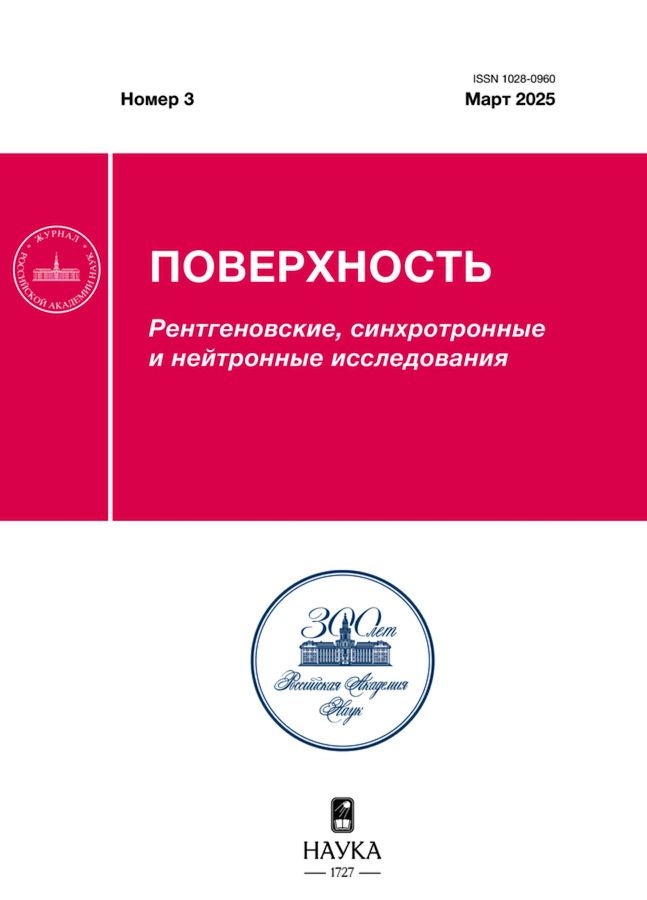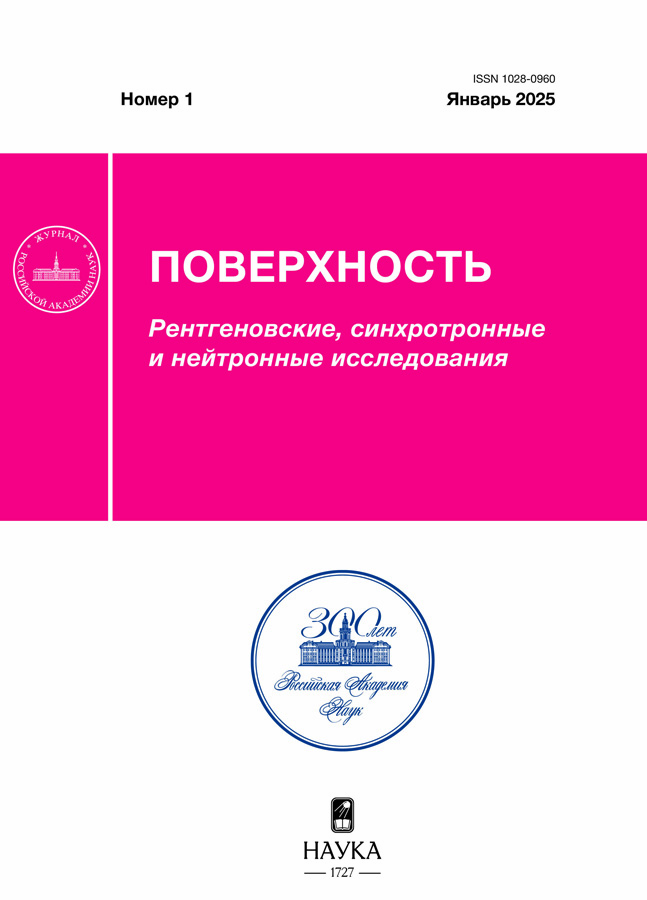Влияние поверхности на развитие и динамику коалесценции капель в оптических ячейках при фазовом переходе изотропная жидкость–жидкий кристалл
- Авторы: Долганов П.В.1, Спириденко Н.А.1, Долганов В.К.1
-
Учреждения:
- Институт физики твердого тела им. Ю.А. Осипьяна Российской академии наук
- Выпуск: № 1 (2025)
- Страницы: 10-16
- Раздел: Статьи
- URL: https://rjsocmed.com/1028-0960/article/view/686097
- DOI: https://doi.org/10.31857/S1028096025010027
- EDN: https://elibrary.ru/ABTOLN
- ID: 686097
Цитировать
Полный текст
Аннотация
В работе представлены результаты исследований слияния капель нематического жидкого кристалла в окружении изотропной жидкости. С помощью оптической микроскопии высокого разрешения и высокоскоростной видеорегистрации изучено слияние капель в тонких оптических ячейках. Использованы ячейки с планарными и с гомеотропными граничными условиями для единичного вектора преимущественной ориентации (директора) жидкого кристалла. Показано, что в зависимости от граничных условий на поверхности ячейки процесс слияния на начальном этапе развивается по-разному. В ячейке с планарными граничными условиями на начальном этапе наблюдали линейную зависимость ширины перешейка между каплями от времени. На последующих этапах влияние поверхностей приводит к более медленной динамике. Заключительный этап слияния характеризуется экспоненциальной релаксацией капли к равновесной форме. При слиянии капель, диаметр которых превышает толщину ячейки, наблюдали промежуточный этап со степенной зависимостью ширины перешейка от времени. Длительность этого этапа увеличивается с увеличением размера капель. Определены капиллярная скорость и характерные времена на различных этапах слияния капель. Характерные времена для начального этапа увеличиваются линейно с увеличением размера капель. Для среднего этапа характерные времена увеличиваются пропорционально кубу радиуса капель.
Ключевые слова
Полный текст
Об авторах
П. В. Долганов
Институт физики твердого тела им. Ю.А. Осипьяна Российской академии наук
Автор, ответственный за переписку.
Email: pauldol@issp.ac.ru
Россия, Московская область, Черноголовка, 142432
Н. А. Спириденко
Институт физики твердого тела им. Ю.А. Осипьяна Российской академии наук
Email: pauldol@issp.ac.ru
Россия, Московская область, Черноголовка, 142432
В. К. Долганов
Институт физики твердого тела им. Ю.А. Осипьяна Российской академии наук
Email: pauldol@issp.ac.ru
Россия, Московская область, Черноголовка, 142432
Список литературы
- Frenkel J. // J. Phys. (Moscow). 1945. V. 9. P. 385.
- Hopper R.W. // J. Am. Ceram. Soc. 1984. V. 67. P. 262. https://www.doi.org/10.1111/j.1151-2916.1984.tb19692.x
- Menchaca-Rocha A., Martinez-Davalos A., Nunez R., Popinet S., Zaleski S. // Phys. Rev. E. 2021. V. 63. P. 046309. https://www.doi.org/10.1103/PhysRevE.63.046309
- Wu M., Cubaud T., Ho C.H. // Phys. Fluids. 2004. V. 16. P. L51. https://www.doi.org/10.1063/1.1756928
- Aarts D.G.A.L., Lekkerkerker H.N.W., Guo G.H., Wegdam D.B. // Phys. Rev. Lett. 2005. V. 95. P. 164503. https://www.doi.org/10.1103/PhysRevLett.95.164503
- Yao W., Maris H.J., Pennington P., Seidel G.M. // Phys. Rev. E. 2005. V. 71. P. 016309. https://www.doi.org/10.1103/PhysRevE.71.016309
- Case S.C., Nagel R.S. // Phys. Rev. Lett. 2008. V. 100. P. 084503. https://www.doi.org/10.1103/PhysRevLett.100.084503
- Paulsen J.D., Burton J.C., Nagel S.R. // Phys. Rev. Lett. 2011. V. 106. P. 114501. https://www.doi.org/10.1103/PhysRevLett.106.114501
- Paulsen J.D., Carmigniani R., Kannan A., Burton J.C., Nagel S.R. // Nat. Commun. 2014. V. 5. P. 3182. https://www.doi.org/10.1038/ncomms4182
- Rahman M., Lee W., Iyer A., Williams S.J. // Phys. Fluids. 2019. V. 31. P. 012104. https://www.doi.org/10.1063/1.5064706
- Shuravin N.S., Dolganov P.V., Dolganov V.K. // Phys. Rev. E. 2019. V. 99. P. 062702. рttps://www.doi.org/10.1103/PhysRevE.99.062702
- Nguyen Z.H., Harth K., Goldfain A.M., Park C.S., Maclennan J.E., Glaser M.A., Clark N.A. // Phys. Rev. Res. 2021. V. 3. P. 033143. https://www.doi.org/10.1103/PhysRevResearch. 3.033143
- Klopp C., Eremin A. // Langmuir. 2020. V. 36. P. 10615. https://www.doi.org/10.1021/acs.langmuir.0c02139
- Delabre U., Cazabat A.M. // Phys. Rev. Lett. 2010. V. 104. P. 227801. https://www.doi.org/10.1103/PhysRevLett.104.227801
- Hack A.M., Tewes W., Xie Q., Datt C., Harth K., Harting J., Snoeijer J.H. // Phys. Rev. Lett. 2020. V. 124. P. 194502. https://www.doi.org/10.1103/PhysRevLett.124.194502
- Ryu S., Zhang H., Anuta U.J. // Micromachines. 2023. V. 14. P. 2046. https://www.doi.org/10.3390/mi14112046
- Beaty E., Lister J.R. // J. Fluid Mech. 2024. V. 984. P. A77. https://www.doi.org/10.1017/jfm.2024.295
- Eggers J., Sprittles J.E., Snoeijer J.H. // Annual Review of Fluid Mechanics. 2024. V. 57. https://www.doi.org/10.1146/annurev-fluid-121021044919
- Yokota M., Okumura K. // PNAS 2011. V. 108. P. 6395. https://www.doi.org/10.1073/pnas1017112108
- Oswald P., Poy G. // Phys. Rev. E. 2015. V. 92. P. 062512. https://www.doi.org/10.1103/PhysRevE.92.062512
- Dolganov P.V., Zverev A.S., Baklanova K.D., Dolganov V.K. // Phys. Rev. E. 2021. V. 104. P. 014702. https://www.doi.org/10.1103/PhysRevE.104.014702
- Долганов П.В., Зверев А.С., Спириденко Н.А., Бакланова К.Д., Долганов В.К. // Поверхность. Рентген., синхротр. и нейтрон. исслед. 2022. № 8. C. 30.
- Dolganov P.V., Spiridenko N.A., Zverev A.S. // Phys. Rev. E. 2024. V. 109. P. 014702. https://www.doi.org/ 10.1103/PhysRevE.109.014702
- Долганов П.В., Спириденко Н.А., Долганов В.К., Кац Е.И., Бакланова К.Д. // Письма в ЖЭТФ. 2023. Т. 118. С. 118. https://www.doi.org/10.31857/S1234567823140094
- Де Жен П.-Ж. Физика жидких кристаллов, пер. с англ. М.: Мир, 1977. 400 с.
- Faetti S., Palleschi V. // J. Chem. Phys. 1984. V. 81. P. 6254. https://www.doi.org/10.1063/1.447582
- Kim Y.K., Shiyanovskii S.V., Lavrentovich O.D. // J. Phys. Condens. Matter. 2013. V. 25. P. 404202. https://www.doi.org/10.1088/0953-8984/25/40/ 404202
- Haputhanthrige N.P., Paladugu S., Lavrentovich M.O., Lavrentovich O.D. // Phys. Rev. E. 2024. V. 109. P. 064703. https://www.doi.org/10.1103/PhysRevE.109.064703
- Eggers J. // Rev. Mod. Phys. 1997. V. 69. P. 865. https://www.doi.org/10.1103/RevModPhys.69.865
- McKinley G.H., Tripati A. // J. Rheology. 2000. V. 44. P. 653. https://www.doi.org/10.1122/1.551105
- Eggers J., Villermaux E. // Rep. Prog. Phys. 2008. V. 71. P. 036601. https://www.doi.org/10.1088/0034-4885/71/3/036601
Дополнительные файлы

















